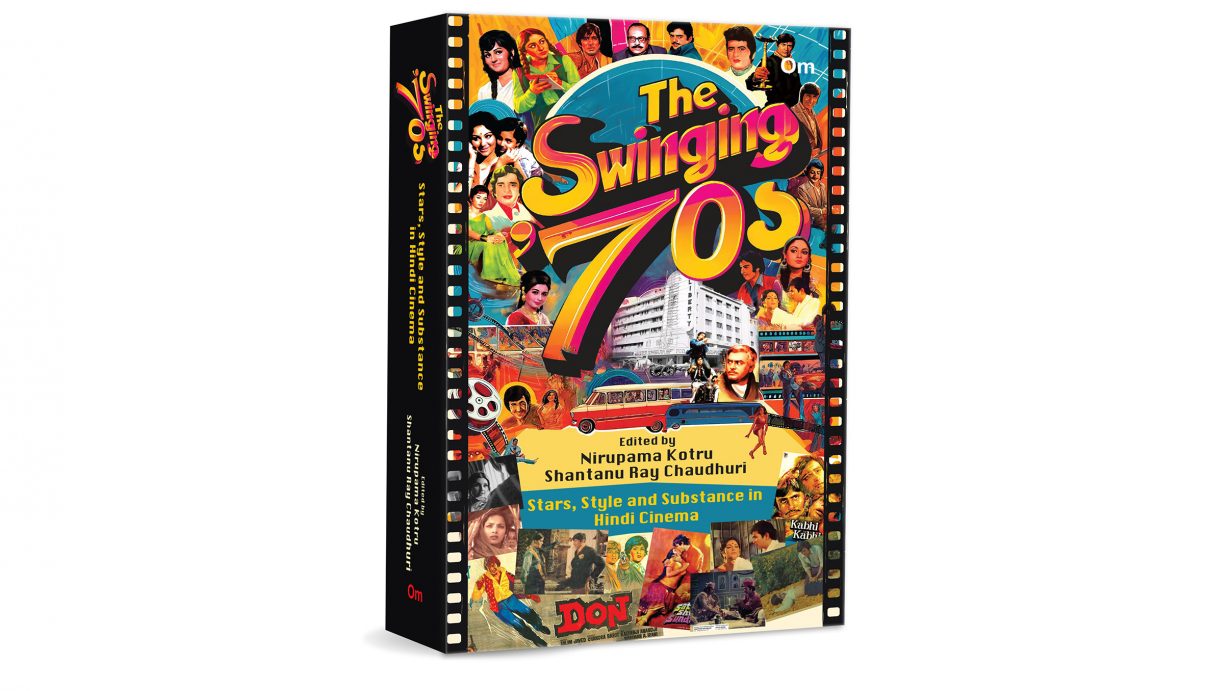Arguably, no other population in the world is as influenced in its behavioural patterns and fashion choices as Indians are by cinema. A new book, Swinging ’70s, explores why

As the editors of this anthology of essays point out, the 1970s was a rich period in Hindi cinema. The decade was marked by the release of Sholay (1975), arguably one of the most successful films ever made; the rise of megastars like Amitabh Bachchan; and the fact that arthouse favourites like directors Mani Kaul and Shyam Benegal, and actors like Smita Patil and Shabana Azmi were at the height of their powers. But it was also a watershed decade in India’s postindependence history.
The 1970s was, as screenwriter and lyricist Varun Grover helpfully describes it, ‘the age of post-puberty adolescence for our young nation’. The sense of promise, hope and aspiration felt after independence in 1947 had given way to an age of disillusionment, anger and confusion, culminating with the violence of the Emergency years (1975–77), when civil liberties were suspended. India had left behind the nation-building exercise of the 1950s and 60s that had encouraged austerity and restraint, and was heading into the last of the socialist years during the tumultuous 1980s that advanced regional militancy and violence in political life. What better medium through which to chart the sociopolitical history of the country during this decade than one of India’s most popular and accessible mediums: Hindi cinema. Indeed, it has been a long-standing resource for observing national aspirations – albeit because the language (officially India has 22 others, but in practice considerably more than that) and customs at its heart are heavily north-India-centric.
Still, it is impossible to overstate just how much influence the Hindi cinemaverse has on culture in India (the industry might commonly be known as Bollywood, but several insiders reject the moniker for being patronising and an unnecessary reference to Hollywood). It also directly impacts the billion-dollar profits of other businesses, dictating fashion trends and wedding themes, as well as decor choices and holiday destinations for millions of desis around the world. Far more significantly, perhaps even dangerously so, it strongly influences behavioural patterns and shapes public morality, more often than not strengthening deeply embedded patriarchal value-systems.

The essays in this anthology are a mixed bag, both in terms of the quality of the writing and the value they bring to an understanding of the films from the era, but they do span the gamut of themes listed above, giving as much space to nostalgic, emotional tributes to a film, auteur or song lyrics as they do to insider accounts of the nitty-gritty of moviemaking. Some personal favourites include critic Bobby Sing’s essay on the audio-cassette revolution and how it changed the way we listen to music; writer and critic Jai Arjun Singh’s account of how cassettes of movie dialogues helped millions of Indians who lived in places that did not have access to cinema theatres to listen to a film long before they could watch it; actor Rajat Kapoor on Kaul’s fascinating movie Duvidha (1973); film critic Nandini Ramnath on the moll, the missus and other female archetypes in cinema; journalist Sathya Saran on how film magazines peddled gossip and made and unmade careers before social-media and personal PR teams would come to be employed for the brand-building of stars; and writer Balaji Vittal on the antiheroes and villains of cinema. With trivia quiz questions and answers sprinkled throughout the book, and analytical profiles of stars, directors and other industry stalwarts, the book offers something for both casual film enthusiasts and more passionate students of the artform.
The anthology reminds one of how so many tropes invented during the 1970s, like Bachchan’s ‘angry young man’ and the layering of comedy-drama-romance-violence-tragedy within a single film – these would come to be informally called masala entertainers – continue to be points of reference in everyday culture in the country. Arguably, no other population in the world is as influenced in its behavioural patterns and fashion choices as Indians are by cinema. One hopes this book will encourage similar documentation of subsequent decades, which might, in turn, yield an interesting parallel history of contemporary India.
The Swinging ’70s: Stars, Style and Substance in Hindi Cinema. Edited by Nirupama Kotru and Shantanu Ray Chaudhuri. Om Books International, Rs 695 (softcover)